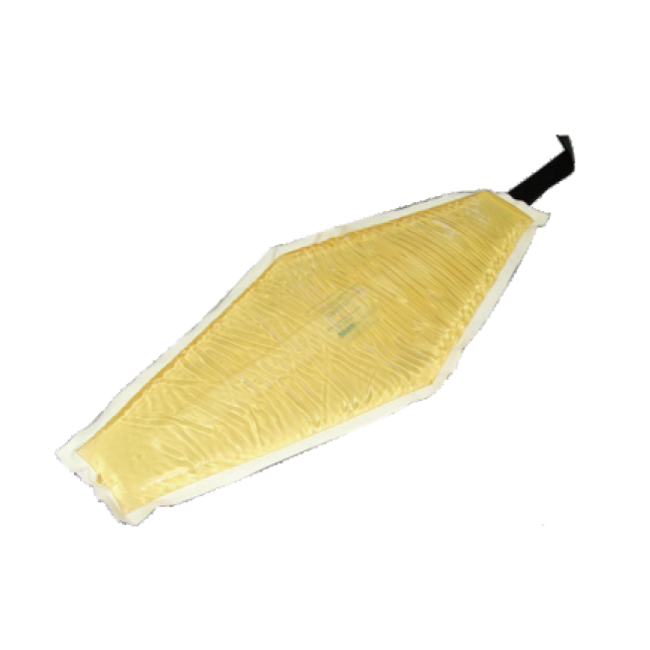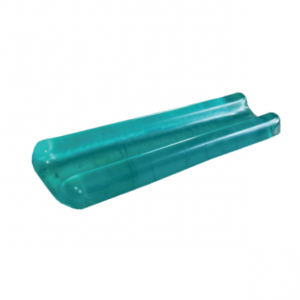
Elbow strap ORP-ES (Ulnar brachial nerve protector)
ES Elbow Strap
Model: ORP-ES-00
Function
1. Diamond shaped ulnar brachial nerve protector
2. It is an upper arm bracket used on operation table to protect elbow and forearm and avoid ulnar nerve injury.
3. It provides anti-shear protection to ulnar nerve while permitting access for the anesthesiologist. Pad wraps around elbow and secures with hook and loop strap
Dimension
41 x 16/5.5 x 1.5cm
Weight
0.63kg




Product parameters
Product Name: Positioner
Material: PU Gel
Definition: It is a medical device which is used in an operating room to protect patient from pressure sores during surgery.
Model: Different positioners are used for different surgical positions
Color: Yellow, blue, green. Other colors and sizes can be customized
Product characteristics: Gel is a kind of high molecular material, with good softness, support, shock absorption and compression resistance, good compatibility with human tissues, X-ray transmission, insulation, non-conductive, easy to clean, convenient to disinfect, and does not support bacterial growth.
Function: Avoid pressure ulcer caused by long operation time
Product characteristics
1. The insulation is non-conductive, easy to clean and disinfect. It does not support bacterial growth and has good temperature resistance. The resistance temperature ranges from -10 ℃ to +50 ℃
2. It provides patients with good, comfortable and stable body position fixation. It maximizes the exposure of the surgical field, reduce the operation time, maximize the dispersion of pressure, and reduce the occurrence of pressure ulcer and nerve damage.
Cautions
1. Do not wash the product. If the surface is dirty, wipe the surface with a wet towel. It can also be cleaned with neutral cleaning spray for better effect.
2. After using the product, please clean the surface of the positioners on time to remove dirt, sweat, urine, etc. The fabric can be stored in a dry place after drying in a cool place. After storage, do not put heavy objects on top of the product.
Positioning Patients for Surgery related to peripheral nerves
The goal of positioning patients for surgery is to provide optimal operating conditions while maintaining patient safety and minimizing stress on peripheral nerves. Upper extremity positions that lead to stretch or compression of the peripheral nerves should be avoided whenever possible. The head and neck should be maintained in the neutral position while avoiding lateral angulation or rotation. Safety straps should not be tight to avoid direct compression of peripheral nerves and surrounding tissues. The use of shoulder braces should be avoided especially in the steep head-down position. If the use of shoulder braces is deemed necessary, braces should be positioned more laterally against the acromioclavicular joints to reduce direct compression on the brachial plexus. The elbow should not be overextended in a position that would not be tolerated by the patient when awake.
The supine position is the most common patient position on the operating room table. The patient’s arms are positioned either away from the sides on arm boards (supine arms out) or at the sides (supine arms tucked). In the supine arms out position, there is conflicting literature on a safe level of arm abduction when the arms are placed on arm boards. In spite of this, consulted experts believe that when the arms are abducted on arm boards, abduction should be no more than 90°, and the forearm should be placed in the supine (palms up) or neutral position (palms toward the body). The cubital tunnel of the elbow should be padded to avoid pressure on the ulnar nerve. The wrist should be neutral with respect to the forearm and not extended or flexed. The arm board and padding should be at the same level as the operating room bed and mattress to prevent posterior displacement of the arm.
In the supine arm tucked position, the arms should be in the neutral position with the palm facing the body. All protruding portions of the arm such as the elbow should be protected with padding. Finally, the arm should be protected (with padding or positioning) from all other hard objects.









